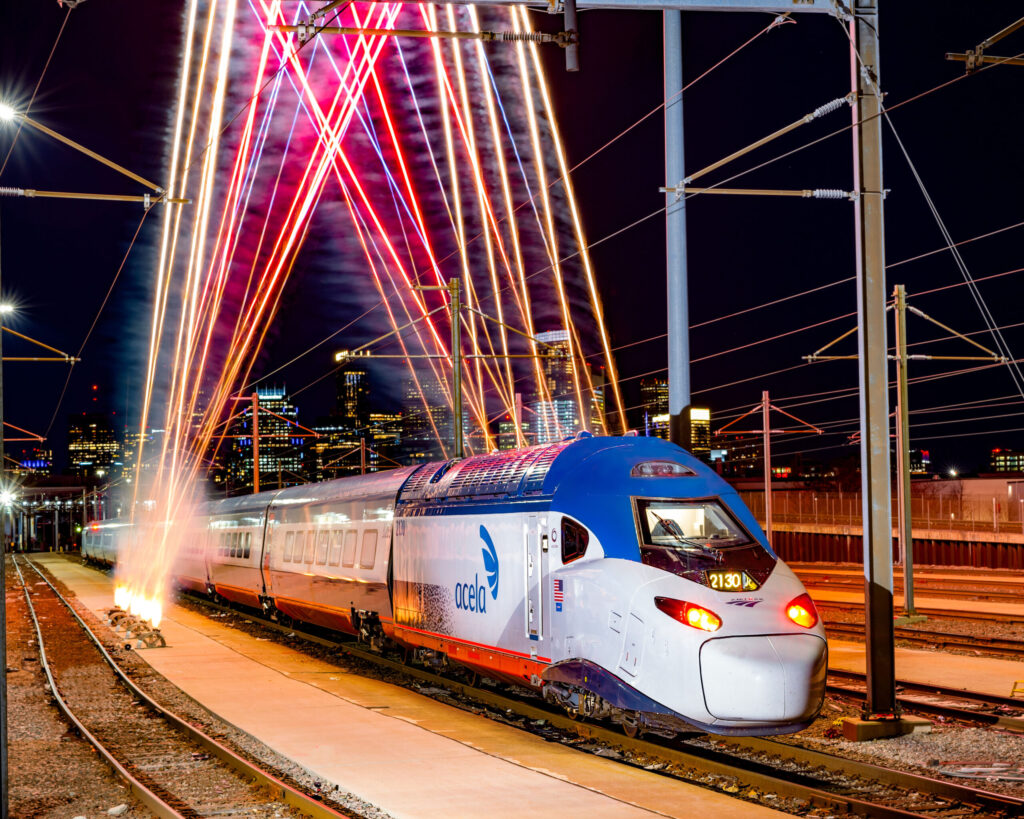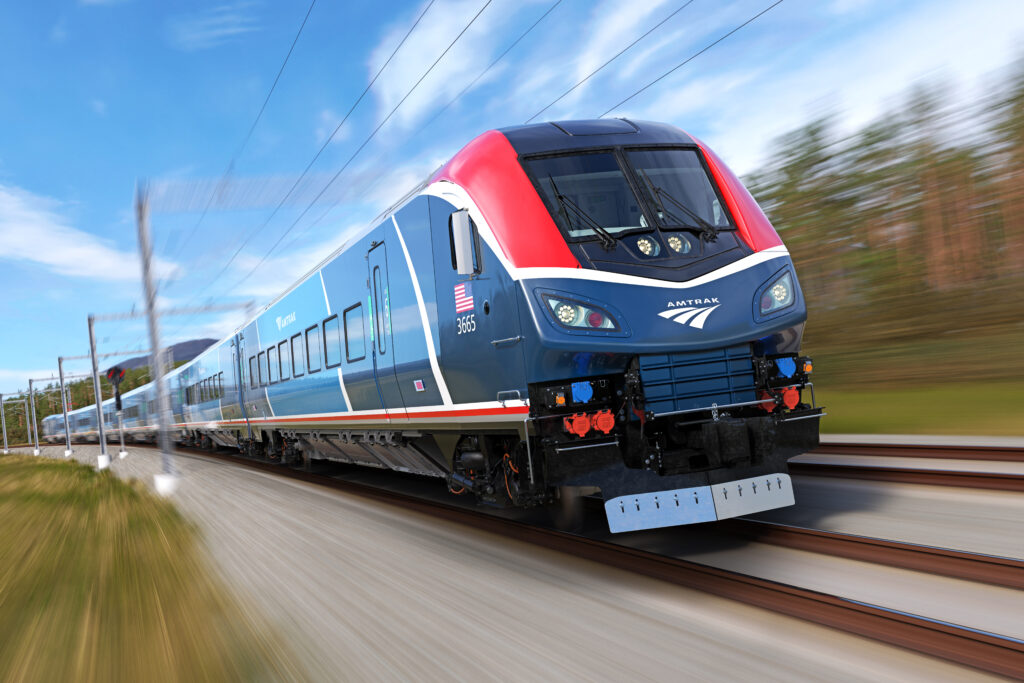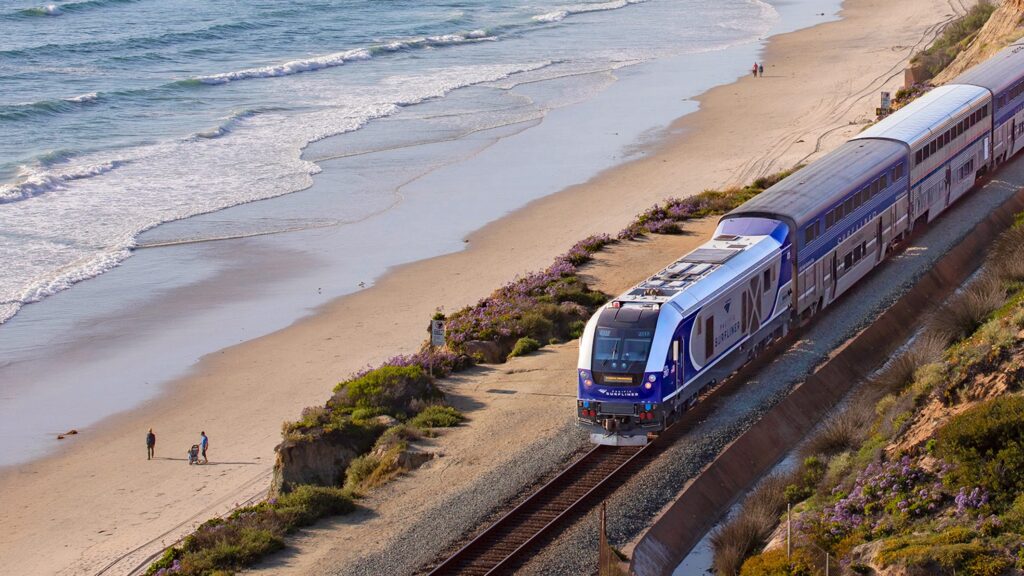Amtrak’s FY25 Milestone: Growth Fueled by Investment and Innovation
11/19/2025

Amtrak closed Fiscal Year 2025 with its strongest performance to date. With record ridership, revenue gains, and unprecedented capital investment, the national passenger railroad is demonstrating what growth looks like when federal support, state partnerships, and industry collaboration align around the goal of moving more people—more reliably and comfortably—by train.
“Amtrak’s growth is a preview of what’s possible when everyone is working together,” said U.S. Transportation Secretary Sean P. Duffy, pointing to faster trains, extended routes, and more affordable service as building blocks of what he called a “new era of American rail.”
The numbers tell the story. Amtrak delivered 34.5 million customer trips in FY25, a 5.1 percent increase over FY24 and an all-time record. Revenue growth outpaced ridership, fueled by robust demand systemwide and a 10.4 percent increase in adjusted ticket revenue—a first in the railroad’s history. The Northeast Corridor continued to anchor financial success, while state-supported services and Long Distance trains delivered record gains. Demand for iconic routes such as the California Zephyr and Coast Starlight remains strong, and membership in Amtrak Guest Rewards surpassed 20 million, now representing more than half of all riders.

For Amtrak President Roger Harris, these results reflect more than a surge in travel demand. “Amtrak’s operational success is not just about moving more people, it’s about moving them better,” Harris said. The railroad reached high marks in customer service metrics including Wi-Fi reliability, food and beverage service, train status communication, and station signage. New car wash facilities in Boston, Chicago, New Orleans, and Seattle improved fleet cleanliness, while better terminal coordination sharpened on-time performance. September closed the fiscal year with some of the strongest reliability gains seen in recent years.
Amtrak’s year of growth also included a wave of service expansion. The new Amtrak Mardi Gras Service between Mobile and New Orleans restored Gulf Coast rail for the first time in nearly two decades, carrying more than 18,000 riders in its first month. The Borealis service between Chicago and the Twin Cities recorded nearly a quarter million riders in its first full year, driving a 227 percent increase in corridor ridership year over year. These successes point to the future: targeted corridor investments are proving to attract riders quickly and sustainably.
Fleet modernization—central to Amtrak’s long-term strategy—accelerated as well. NextGen Acela entered service on the Northeast Corridor, welcoming more than 60,000 riders in its first month. The first Airo trainset moved into testing in Pueblo, CO, while new Long Distance locomotives and Superliner interior upgrades advanced customer comfort nationwide.

Amtrak delivered a record $5.5 billion in infrastructure spending in FY25, a nearly 25 percent increase over the previous year. Projects range from key state-of-good-repair work to major station, tunnel, and bridge improvements, including the Portal North Bridge and the Connecticut River Bridge. ADA upgrades alone totaled more than $182 million, part of a multi-year effort to improve accessibility across the passenger rail network. Rail yard upgrades—from Seattle to the East Coast—will support the deployment of Airo trains, reshaping maintenance and operations for decades.
With strong financial performance, expanding service, and a modernized fleet on the horizon, Amtrak remains on track to achieve train operational profitability by FY28. The railroad’s remarkable FY25 results mark not just a milestone year, but a demonstration of what sustained investment, industry partnership, and a commitment to customer experience can achieve.